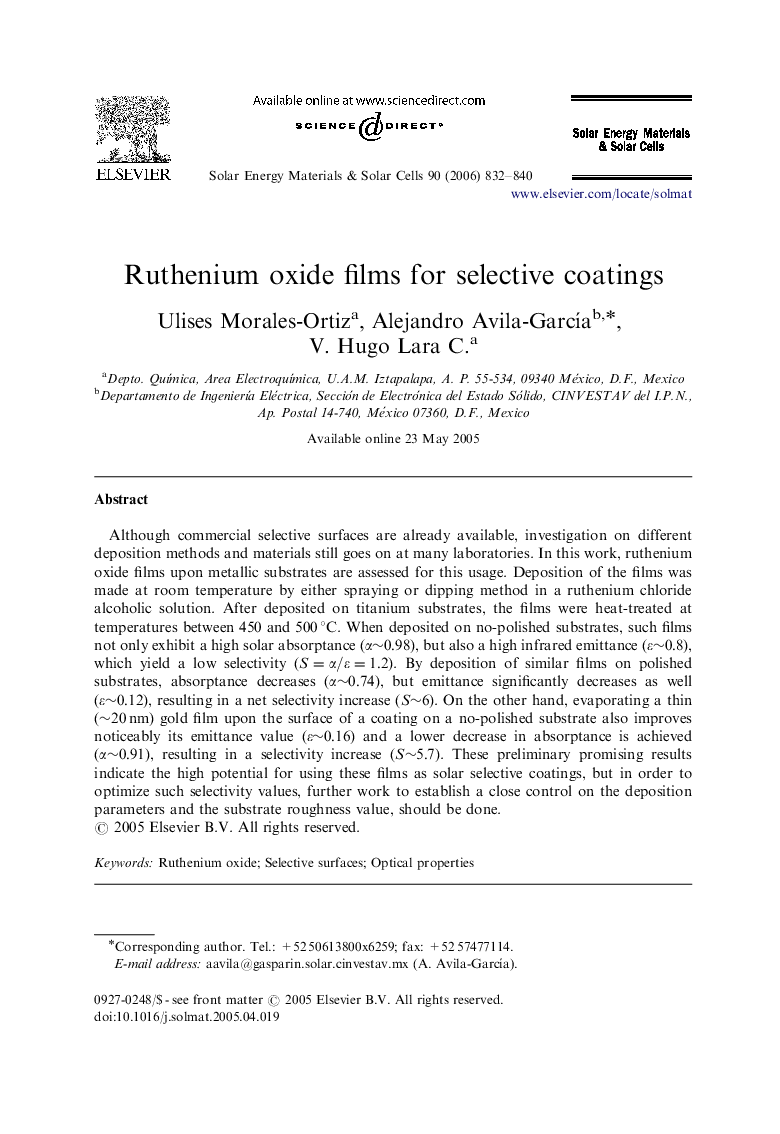| Article ID | Journal | Published Year | Pages | File Type |
|---|---|---|---|---|
| 80794 | Solar Energy Materials and Solar Cells | 2006 | 9 Pages |
Although commercial selective surfaces are already available, investigation on different deposition methods and materials still goes on at many laboratories. In this work, ruthenium oxide films upon metallic substrates are assessed for this usage. Deposition of the films was made at room temperature by either spraying or dipping method in a ruthenium chloride alcoholic solution. After deposited on titanium substrates, the films were heat-treated at temperatures between 450 and 500 °C. When deposited on no-polished substrates, such films not only exhibit a high solar absorptance (α∼0.98α∼0.98), but also a high infrared emittance (ε∼0.8ε∼0.8), which yield a low selectivity (S=α/ε=1.2S=α/ε=1.2). By deposition of similar films on polished substrates, absorptance decreases (α∼0.74α∼0.74), but emittance significantly decreases as well (ε∼0.12ε∼0.12), resulting in a net selectivity increase (S∼6S∼6). On the other hand, evaporating a thin (∼20 nm) gold film upon the surface of a coating on a no-polished substrate also improves noticeably its emittance value (ε∼0.16ε∼0.16) and a lower decrease in absorptance is achieved (α∼0.91α∼0.91), resulting in a selectivity increase (S∼5.7S∼5.7). These preliminary promising results indicate the high potential for using these films as solar selective coatings, but in order to optimize such selectivity values, further work to establish a close control on the deposition parameters and the substrate roughness value, should be done.
